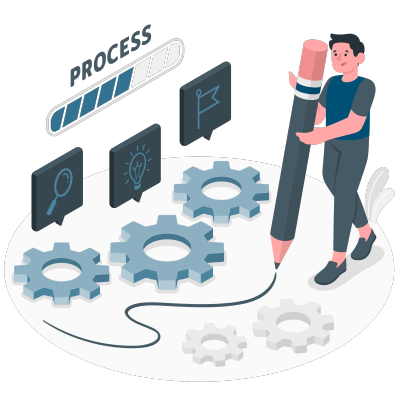What is business process management?
Embark on a journey to comprehend Business Process Management (BPM), a catalyst for operational optimization and perpetual enhancement. Explore the nuances of BPM, debunk the myths surrounding BPMN (Business Process Model and Notation), and unlock the potential of Your Leap Process Manager in simplifying this pivotal business practice
Understanding Business Process Management
Unlocking Operational Efficiency
Business Process Management (BPM) encapsulates the strategic methodology of capturing, analyzing, and enhancing the processes that drive your organization’s delivery of products and services. By fostering a culture of continuous improvement, BPM empowers teams to streamline operations and uphold standards of excellence. Despite its proven advantages, many enterprises have yet to harness the transformative power of BPM, leading to missed opportunities in a fiercely competitive landscape, Business Process Management (BPM), a strategic approach to refining the processes at the heart of your product and service delivery. BPM champions a culture of ongoing enhancement, enabling teams to optimize operations and maintain superior quality standards. Despite its established benefits, numerous businesses are still not leveraging BPM’s revolutionary potential, missing out on critical advantages in today’s competitive market.
Demystifying BPM vs. BPMN
Deciphering Complexities
BPM often gets misconstrued with BPMN (Business Process Model and Notation), a graphical representation used for documenting business processes. While BPMN offers a standardized approach to visually depict process flows, its intricate language and technical requirements pose challenges for widespread adoption. In contrast, BPM tools like Your Leap Process Manager offer simplicity, accessibility, and user engagement, paving the way for seamless process management and organizational transformation
Exploring the BPM Lifecycle
The BPM lifecycle outlines a systematic approach to implementing and managing business processes, comprising five iterative stages:
Design: Thoroughly understand the existing process through stakeholder interviews, documentation review, and observation
Model: Visualize the current and future state of the process to drive improvement and garner stakeholder buy-in
Implement: Test the new model in real-world scenarios, addressing concerns and optimizing opportunities for enhancement
Monitor: Track process adherence and performance metrics to measure success and identify areas for refinement
Optimize: Continuously refine processes based on insights gathered, aiming for maximum efficiency and excellence
Benefits of BPM
Driving Organizational Transformation
BPM empowers organizations to:
- Transform complex processes into intuitive, compliant, and efficient workflows.
- Foster ownership, collaboration, and accountability across the business.
- Enhance operational control, auditing capabilities, and knowledge retention.
- Accelerate speed, agility, and efficiency through process mapping and optimization.
- Ensure visibility and transparency with personalized dashboards and real-time insights.
Examples of BPM in Action
Empowering Operational Excellence
- Streamlining Recruiting and Onboarding Processes: Automate new hire forms, approvals, and equipment provisioning to expedite onboarding and boost employee productivity and retention.
- Optimizing Help Desk Support: Automate ticket assignment, response tracking, and incident resolution to enhance service levels and user satisfaction while reducing response time.
Conclusion:
In an era of relentless competition and evolving customer expectations, BPM emerges as a cornerstone of organizational success. By embracing BPM principles and leveraging innovative tools like Your Leap Process Manager, businesses can unlock operational efficiencies, drive continuous improvement, and chart a path towards sustained growth and prosperity
Ready to Revolutionize Your Business Process ?
Having the conceptual whiteboard not matching with the reality is a common scenario that many businesses face when attempting to streamline their operations, Join thousands of businesses worldwide in streamlining processes with Your Leap Business process designer
